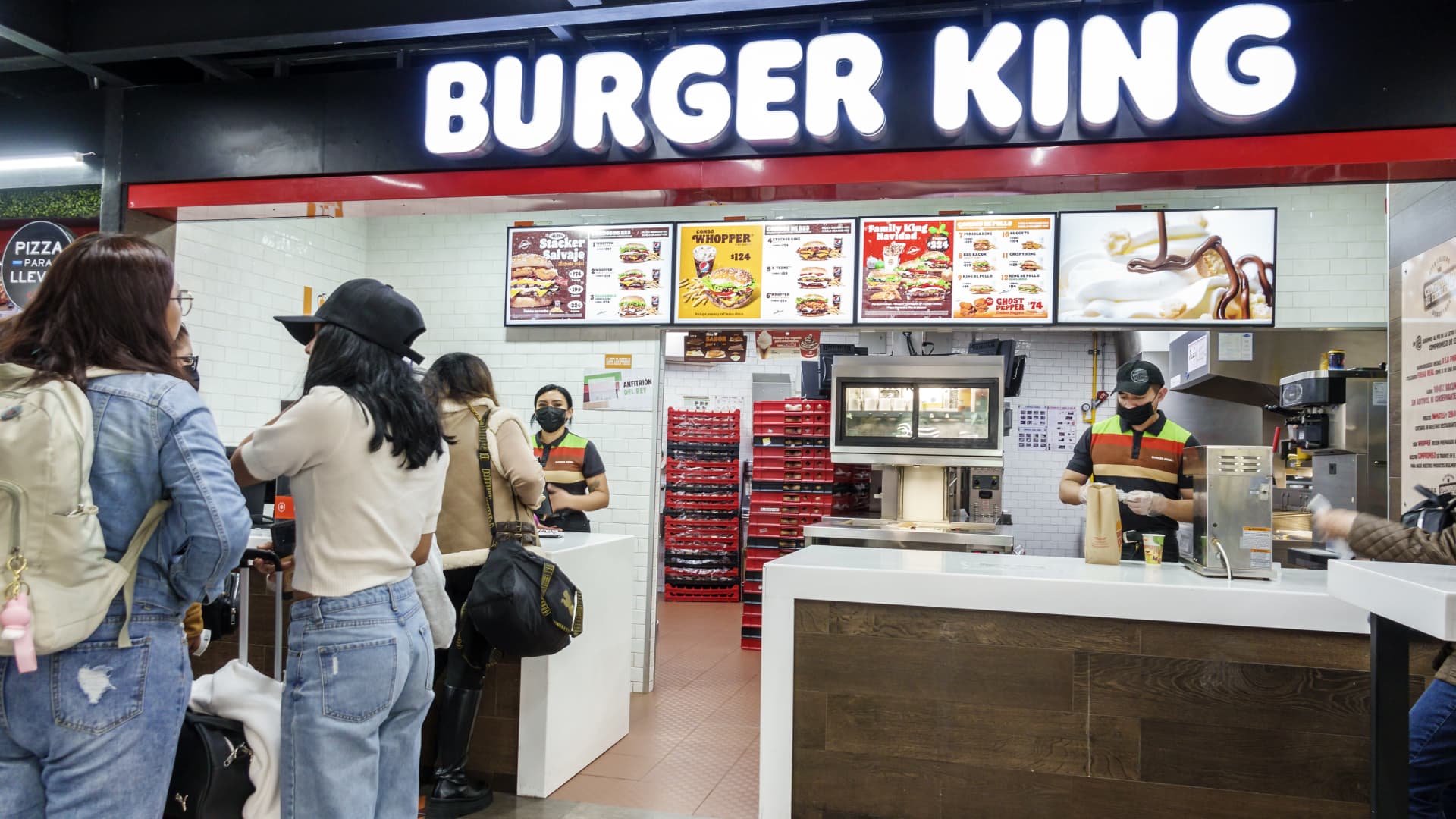Burger King fast food restaurant with menu and customers.
Jeff Greenberg | Universal Images Group | Getty Images
Restaurant Brands International on Tuesday reported double-digit same-store sales growth at Burger King and Tim Hortons for its second quarter.
Shares of the company closed down less than 1% on Tuesday afternoon.
Here’s what the company reported compared with what Wall Street was expecting, based on a survey of analysts by Refinitiv:
- Earnings per share: 85 cents adjusted vs. 77 cents expected
- Revenue: $1.78 billion vs. $1.75 billion expected
Restaurant Brands announced second-quarter net income of $351 million, or 77 cents per share, up from $346 million, or 76 cents per share, a year earlier.
Excluding items, the company earned 85 cents per share.
Net sales rose 8.3% to $1.78 billion. Restaurant Brands’ same-store sales climbed 9.6% in the quarter, driven by strong growth at Tim Hortons and Burger King.
The company’s international markets and Tims’ locations in Canada saw customer visits increase during the quarter, Restaurant Brands CEO Josh Kobza told CNBC. However, U.S. traffic ranged from flat to “a little bit negative” across Popeyes, Burger King and Firehouse Subs.
Other restaurant companies, including rival McDonald’s, have reported growing U.S. traffic as customers trade down from more expensive restaurants. Kobza said it is hard to say if Restaurant Brands is seeing the same behavior.
Tim Hortons, which accounts for more than half of Restaurant Brands’ revenue, reported same-store sales growth of 11.4%, topping StreetAccount estimates of 6.5%. The coffee chain’s same-store sales climbed 12.5% in its Canadian home market.
“We showed strength across all our core categories, but also a lot of growth in some of the big target places we’re trying to take the business, like our P.M. food and cold beverages,” Kobza said.
Recent menu launches at Tims have included its BBQ Crispy Chicken bowl and Sparkling Quenchers, which both aim to draw in more customers in the afternoon.
Burger King’s same-store sales rose 10.2%, beating estimates of 5.3%. In the United States, where the company is trying to reinvigorate the brand, the burger chain’s same-store sales increased 8.3%.
Restaurant Brands spent $10 million on advertising for Burger King in the U.S. during the quarter. The company also invested $11 million in restaurant upgrades, including renovations. Restaurant Brands plans to spend $400 million on Burger King’s comeback in its home market over the course of the turnaround.
Much of Burger King’s U.S. marketing has focused on the Whopper, its signature menu item. Kobza said the chain’s Spider-Verse Whopper, tied to the release of “Spider-Man: Across the Spider-Verse,” drove new, younger customers to its restaurants to buy the burger.
Popeyes saw same-store sales growth of 6.3%, topping expectations of 3.5%.
Firehouse Subs, the most recent addition to Restaurant Brands’ portfolio, reported same-store sales growth of 2.1%.
Looking ahead, the company will likely have a better view of its long-term growth targets by the end of the year, Kobza told investors on the company’s conference call. Back in 2019, Restaurant Brands said it was aiming for 5% unit growth and 2% to 3% same-store sales growth, but the Covid pandemic and inflation upended that forecast.
Image and article originally from www.cnbc.com. Read the original article here.

